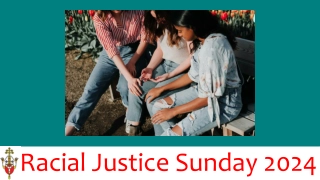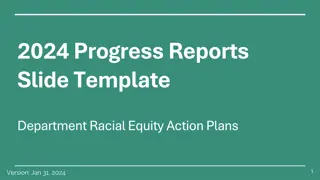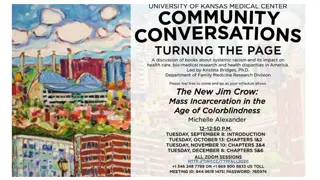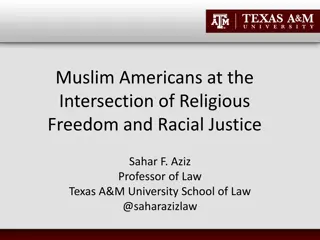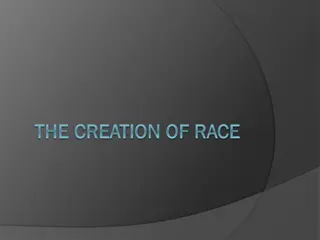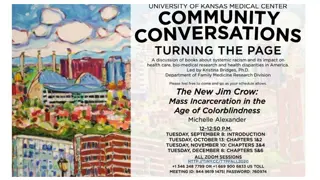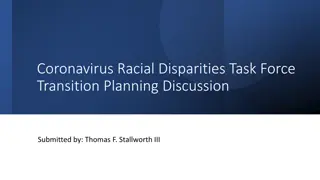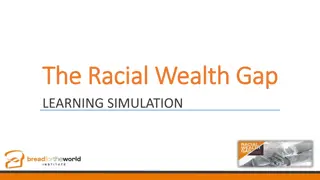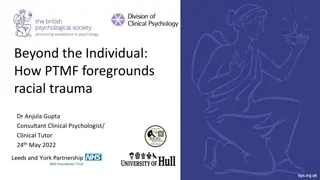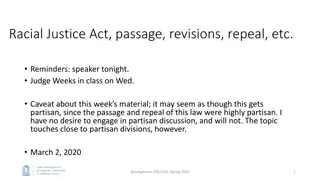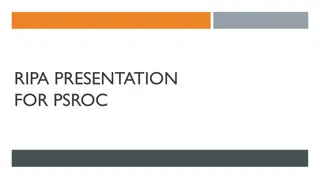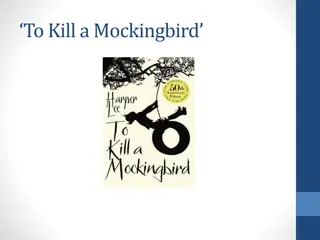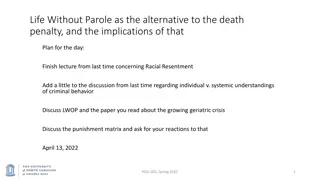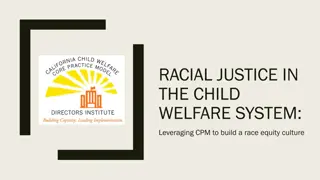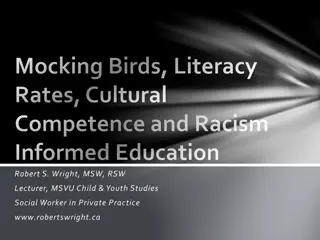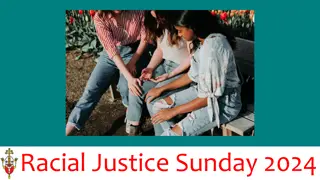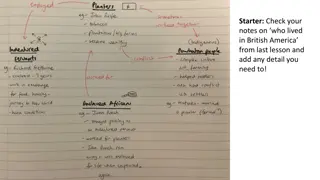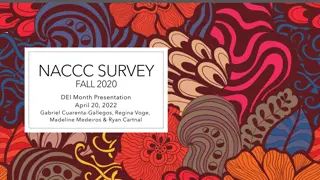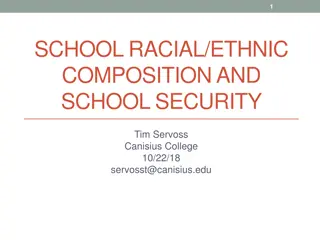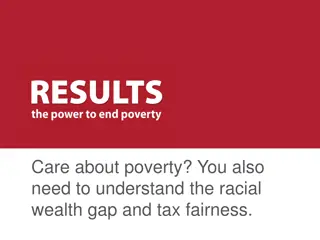Understanding the Impact of Racial Experiences in Education
Exploring the significance of racial experiences in educational settings, this presentation sheds light on how such experiences affect teachers, researchers, and children. The RESPECT Project investigates young children's encounters with racism and aims to empower educators to facilitate conversations promoting positive racial identity and agency.
Download Presentation

Please find below an Image/Link to download the presentation.
The content on the website is provided AS IS for your information and personal use only. It may not be sold, licensed, or shared on other websites without obtaining consent from the author. Download presentation by click this link. If you encounter any issues during the download, it is possible that the publisher has removed the file from their server.
E N D
Presentation Transcript
Why racial experiences matter in the classroom: for teachers, researchers and children. in the classroom: for teachers, researchers and children. Why racial experiences matter Presented by Presented by Verity Jones Verity Jones GTE 2023 GTE 2023
The Team Justin Vafadari EDI Education Chris Pawson Psychology Luci Gorell Barnes Artist Sarah Whitehouse Primary Geography Verity Jones Primary Geography Tessa Podpadec Psychology Malcolm Richards EDI Education
Prilleltensky and Prillentensky s (2021) Mattering Cycle (for adults), amended to imagine the experiences of children in school.
Accompaniment If you have come here to help me, you are wasting your time. But if you have come because your liberation is bound up with mine, then let us work together .
The RESPECT Project. The RESPECT Project . sought to a) better understand young children s (10-11 years old) institutional and interpersonal experiences of racism b) explore how these experiences are internalised by young people, with a view to understanding mechanisms of influence on their mental health c) test a potential method which will enable young people to articulate their external and internal experiences d) make recommendations for how teachers and student teachers might be empowered to have conversations about racism, in order to support positive racial identity and agency
Recruitment, selection & ethical considerations Advisory panel consultation Project design Using maps to connect situations to feelings Exploration of emotional literacy Small group body mapping activity 8 workshops What we did ... Child reflection Child feedforward Focus Groups Qual: Body maps Qual: Focus groups Quant: wellbeing and mental health surveys Analysis
Affective Impact Affective Impact of Method of Method Me and My Feelings Survey (Patalay et al., 2014) Satisfaction with Life Scale (Seligson, Huebner & Valois, 2003) Student Resilience Survey (CORC: Student Resilience Survey (SRS) (corc.uk.net)
What the children said: I liked that you always believed us and didn t say no, no that didn t happen. I liked the pictures, it was fun doing them. It s a good way of expressing yourself I liked talking, discussing important topics like racism, we usually only talk about racism in Black History Week, or when we learn about slavery or when a racial incident happens. I would like to talk more about racism, the little racist incidents and how we feel about them, because if has such a big impact on us. Drawings can show your action, and your actions can show what you re feeling
What the student teachers said: I will never understand what it's like to actually be discriminated against because of my race. I'll never be the person that has that attack against them, so being able to pick up on the littler comments and understand the actual detrimental impact that that one singular comment can have is important. The body mapping is a really good Children exercise because it gives children the capacity to identify what they've witnessed or what they've seen and how it's made them feel. We need to find a way for this to be part of our curriculum that we use throughout the year. You're not making a judgment, and you're not kind of deciding for them. Children are sharing with you what they have experienced.
Its just that, White children are loved more
Link to website and e-book www.respectprojectbristol.org/ https://issuu.com/uwebristol/docs /if_racism_vanished_for_a_day
Prepared by Verity6.Jones@uwe.ac.uk @VerityJones_Edu Dr Verity Jones Luci Gorell Barnes Justin Vafadari Dr Tessa Podpadec Dr Chris Pawson Dr Sarah Whitehouse contactlucigb@gmail.com JustinVafadari@uwe.ac.uk Tessa.Podpadec@uwe.ac.uk Chris.Pawson@uwe.ac.uk Sarah.Whitehouse@uwe.ac.uk
Sample of findings from focus groups The multiple contexts of children s racist experiences That could happen to any of us regarding the murder of George Floyd When I go near my cousin s, there s a group of [white] people who like literally say the N-word like, every single day From my Dad s family, they kind of just didn t want to see me because I was mixed race Racism in School A girl in my class said my skin colour was like mud , I think he called me a bomber or something like that Making sense of racist experiences, perceptions of authority and power It s as if white people are loved more , Responding with anxiety and helplessness Whenever I got bullied, like seriously, the headteacher would just do an assembly... just give them a reflection or something Discomfort and uncertainty In our last class do you remember, there was one table of Black people? Coping strategies Screaming into my pillow , I read the Quran , Drawing, sketching , I just take my dog on a walk I ll talk with a Black person because they have experienced it more than me and stuff Both [white and Black] but only if you trust someone
Initial recommendations for teachers and teacher educators To acknowledge that young children experience both overt and covert racism, and the potential impact on wellbeing across all levels of society. For teachers and trainee teachers to recognise their positionality and commitment to allyship, and be explicit about this to children. To create a safe space for discussion through creative mediums. Continual checking of acceptability To embed restorative justice policy and practices as a tool for addressing overt and covert racism


